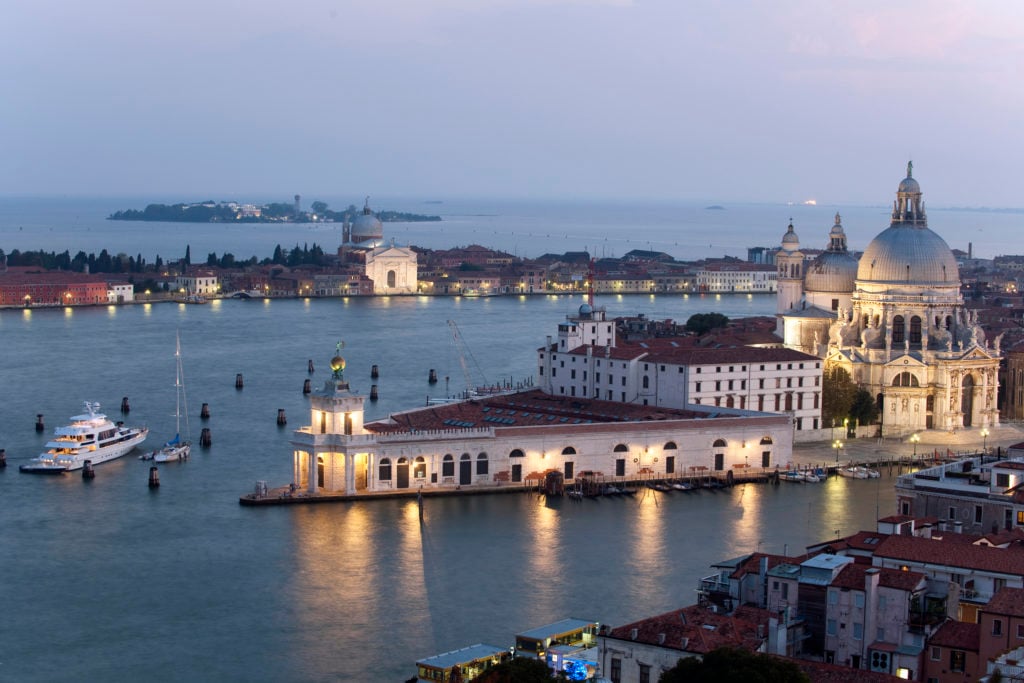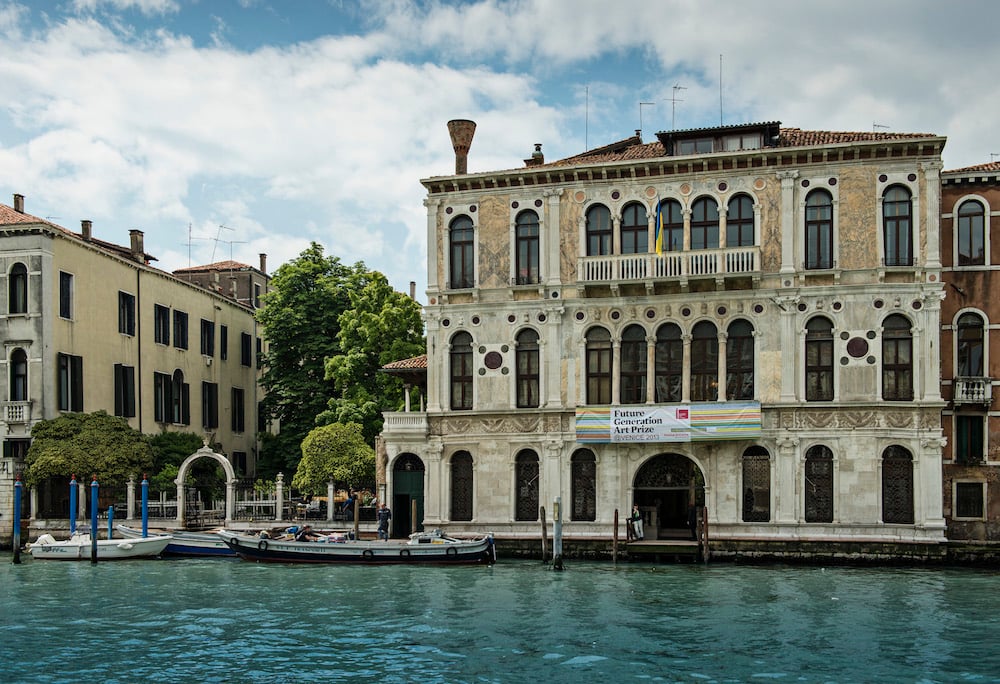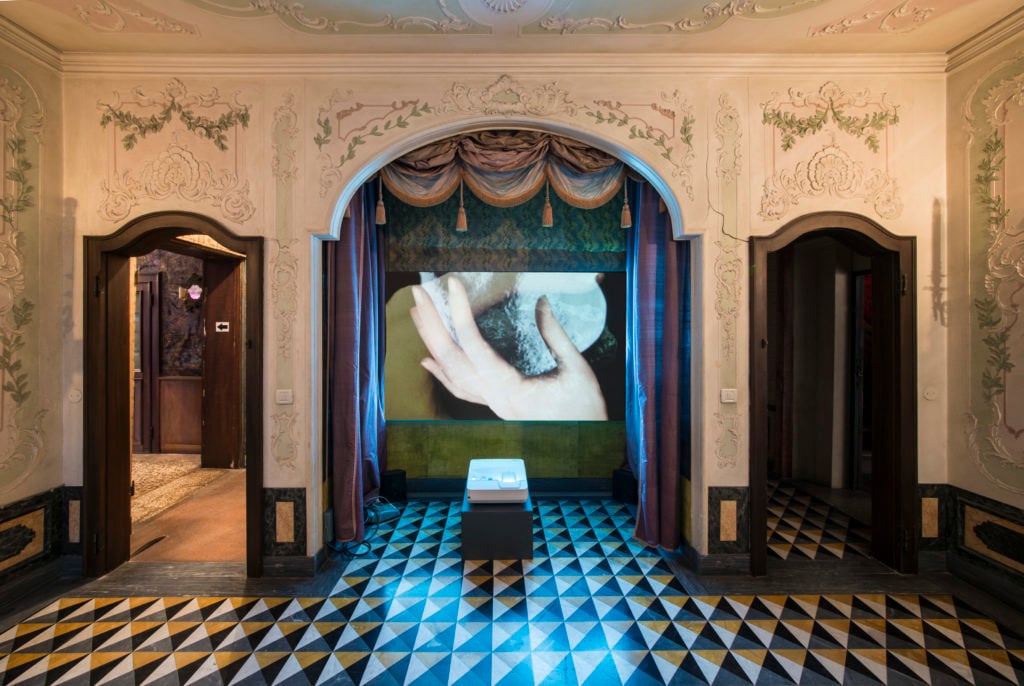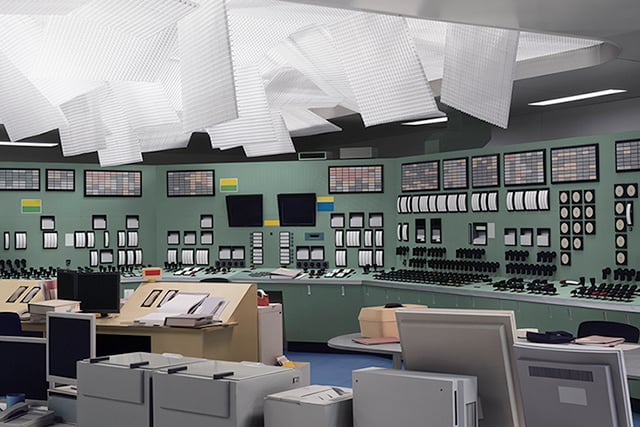Art World
How to Get a Satellite Show During the Venice Biennale
There are several ways for an artist to be shown in Venice.

There are several ways for an artist to be shown in Venice.

Sarah Hyde

The opening week of the Venice Biennale—which has never been more important than it is now—sees the global art community, including artists, institutional curators, influencers, gallerists, and the collectors (in their super Yachts), descending on the labyrinthine city. The vaporettos, river taxis, and winding streets will be heaving with people that you know and recognize, dressed in this summer’s global art fashion, tapping furiously on hand-held devices to try and deal with the FOMO which appears to increasingly terrorize and drive our global art tribe.
Being exhibited at the Venice Biennale, and in particular representing your country, is one of the highest accolades a living artist can achieve. And the names of artists from around the world invited by Christine Macel to take part in the group exhibition at the Arsenale, titled “Viva Arte Viva” this year, are now being carefully studied by anyone who’s paying attention.
These selections are, for the most part, beyond the control of the art market and are subject to the selection criteria and regulations of the Biennale. However, gallerists, artists, and foundations are increasingly aware of the importance of meeting this global audience and obtaining the cache of being exhibited in Venice.
But how do you exhibit in Venice if your work (or your artist) is not chosen for their national pavilion or invited into the group show? The answer is to put on an exhibition that would run alongside the Biennale, either as an official Collateral Event or simply as an independent exhibition that happens to be concurrent with it—and both options are booming.
The first thing to establish is whether to be a part of the official Collateral Events program, and subject to selection procedure. The deadline for entry was October 17, 2016. Applications were vetted by Macel, the artistic director, and the criteria are clear: In order for the Biennale to accept the application it must be autonomous and from a non-profit organisation.
Importantly, the shows can’t be directly commercially funded and must be proposed by a “promoter” organization. The proposal will include details of the art works, the curatorial direction, some technical explanation of how the exhibition will be achieved, and a location. This is a serious business—once a proposal has been selected, the Biennale will enter into dialogue with successful applicants to discuss and refine the final exhibition. The selection is then officially announced in Venice at a press conference, which took place on the February 6, although individual promoters will have been informed before this.
The financial aspect of a collateral event is just as critical. The promoter can be based anywhere in the world but they must generate funding through grants and sponsorships. This can include sponsorship from governments, arts councils, foundations, galleries, individuals, and artists, while payments in Venice must come through the promoter organization. A promoter will make the application with an organizer, the other key element of the process, who is almost always based in Venice. That’s a necessity in a city like Venice, which operates like no other, with many local rules and regulations in place.
If all of this sounds a bit daunting, remember Venice is geared up towards events; it’s a large part of how the city makes its living, so it is full of people who can facilitate. The Biennale makes a considerable contribution to the upkeep of the historic buildings. Organizing a show does not come cheaply, with a starting price at around €200,000 for a modest event. But the average is around double as much, and if you’re planning to take a Palazzo on the Grand Canal, the rent alone from May to November could come up to €500,000. Still, applying to be listed as a collateral event may be one of the most effective and cheapest ways to get an individual artist’s work shown around the Venice Biennale.
Once an exhibition has been accepted, the next stage is purely technical. If the exhibition takes place in a traditional museum this side of things can be relatively simple. In 2015 the Cy Twombly Foundation organized a show “Paradiso” with the support of the Gagosian Gallery at Ce Pesario, which is an established museum, curated by Julie Sylvester and Philip Larratt-Smith. This style of exhibition will have involved considerably less negotiating with the responsible authorities in the city, such as the Superintendence for Architectural Heritage, during the technical planning, than one taking place in a non-traditional art space.

Palazzo Contarini Polignac in Venice, Italy. Photo ©Sergey Illin, Courtesy PinchukArtCentre
An exhibition that is going to be staged in a reclaimed space or a Palazzo will be stunning; this juxtaposition of historic and antique locations with contemporary art is where the magic of Venice lies. However, as most organizers working in Venice will state, “you can’t put a nail into a wall.” Submitting the technical report for each show has to be achieved by early March, and work can commence only after this is green lighted.
One of the best examples of this is the Future Generation Art Prize, which will return to Venice this year at Palazzo Polignac. artnet News caught up with the curatorial director Björn Geldhof, to get an idea of what made Venice and this exhibition space so special. Geldhof emphasized the importance of coinciding with the Venice Biennale as an ideal platform for the young artists in the show. Many of his winners and runners up have gone on to have considerable success, not least Lynette Yiadom-Boakye, who won in 2013 and had a solo show at the Serpentine in 2015.
Geldhof is equally positive about being an official collateral event in 2017. “This is a unique opportunity to promote the competition to the global art world which convenes in Venice for the Biennale,” he said. “We had over 50,000 visitors and the prize is going from strength to strength and will this year be exhibited once again in the magnificent Palazzo Polignac, a family-owned Palazzo on the grand canal.” This location has many benefits: not only is it a beautiful historical space, it’s right on the Biennale trail and on the way to the Peggy Guggenheim Museum.
When we discussed what one assumes would be the nightmare logistics of moving art by boat, the building’s manager of Palazzo Polignac, Bikem İbrahimoglu, laughed. “Oh it’s on the Grand Canal, that’s like the highway in Venice and we have big doors that open directly onto it. Its just 20 minutes from Marco Polo airport by boat.” Geldhof, who has been curating this event since 2007, has every faith in his expert team of installers. The whole event featuring 20 artists takes about three weeks to set up. “The boat thing is different, but once you have [the art works] inside, its like installing anywhere else.”
Paul Bradley, an organizer based in Venice, is currently working on seven different projects for the Biennale. “Having a local organizer in Venice is key,” he told artnet News. With extensive networks within the city, Bradley is able to access the best spaces to suit his clients’ needs. He believes that location is a key consideration for marketing an event. Being on a main thoroughfare is important and being an official event listed on the collateral events map is the best approach for getting the right audience. This, he thinks, is much more important than widespread billboarding throughout the city and he advises on more directional marketing, such as posters on the vaporetti stations and, if the budget allows, at the airport. What’s certain is that some locations are powerful in themselves, as veteran Biennalists like to return to the same places.
Global Art Affair’s (GAA) Lucia Pedrana also stressed the importance of local involvement. Her organization has exhibitions in four Palazzos which they manage and maintain all year round. They are one of the biggest foundations in Venice and are somewhat of a “one stop shop” as both the promoter and organizer. GAA works across a range of exhibitions including national pavilions, non collateral events, and they also run a group show which is called “Personal Structures,” an official collateral event. In 2015, some 105 artists were included in the exhibition and this year they are looking at increasing that number to 150. Each artist makes an application to GAA, and a process of negation takes place to work out what sponsorship the artist can bring vs. what the foundation can generate.

Agnieszka Polska, My Favourite Things , (2010). ©Agnieszka Polska, Courtesy PinchukArtCentre
Photo by Sergey Illin
The advantages of being selected to be part of the official Biennale Collateral Events are manifold: you are officially included in the Biennale’s map and guidebook attracting visitors to your event from May to November, your exhibition has the credibility of being officially selected and supported by the governing organization, and it is included in the Biennale catalogue and press and media information.
However, other organizations and institutions in Venice, like The Pinault Collection, The Prada Foundation, and many of the museums, choose to have shows alongside the Biennale, but to remain independent. When artnet News discussed this with the Pinault Collection, Martin Bethenod, director of Palazzo Grassi and Punta della Dogana, clarified their position, commenting that “Palazzo Grassi and Punta della Dogana are two institutions with their own exhibition program. We have never been a ‘collateral event’ which does not prevent us from having the best relations with the Bienniale and to collaborate with them whenever we have this opportunity. We have been hosting events of the Dance Biennale as well as theater projects.”
The exhibitions at The Pinault Collection spaces have always opened in April, regardless of whether or not it’s a Biennale year. This year for the first time the Pinault Collection will devote Palazzo Grassi and Punta della Dogana to the same artist: Damien Hirst, opening on April 9 with the hotly anticipated “Treasures From the Wreck of the Unbelievable.”
The Prada Foundation also has its own Palazzo on the Grand Canal and this years exhibition “The Boat is Leaking. The Captain Lied” at Ca’ Corner della Regina, opens on May 13. This trans-media exhibition project is the result of an ongoing, in-depth exchange between writer and filmmaker Alexander Kluge, artist Thomas Demand, stage and costume designer Anna Viebrock, and curator Udo Kittelmann. Both foundations enjoy high-profile Grand Canal locations, achieving huge visibility. By choosing autonomy from the Biennale, they also retain complete curatorial freedom while reaching out to the influential attendees with lavish parties and events.

Thomas Demand, Kontrollraum / Control Room, (2011). ©Thomas Demand, VG Bild-Kunst, Bonn / SIAE, Rome. Courtesy of Sprueth Magers / Matthew Marks Gallery / Esther Schipper
Lucia Pedrana of GAA told artnet News that independent temporary exhibitions are increasing and that’s where the real growth is being seen this year as people become more intent on reaching this influential audience. Independent events are entirely free to show what they want; with the right publicity a small exhibition can get plenty of attention. Memorably in 2015, The Clash guitarist Mick Jones created his ”Rock and Roll Public Library,” which was highly advertised and publicized, with a much talked about rock and roll party to boot. While this was great fun and interesting, essentially, this was not an art exhibition, but an exhibition of Mick Jones’s personal collection of papers that were associated with the band, including many old cigarette packets.
What’s certain is that these fringe events are growing, fueling the delightful sensory overload and kaleidoscopic hullabaloo that make the Venice Biennale the event that it is.